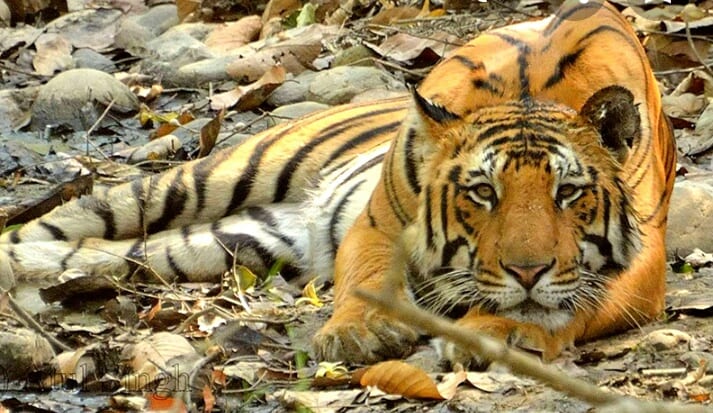Offbeat News
Lakhpat Singh says tiger cubs see humans as prey since beginning

The incessant tiger and leopard attacks in Uttarakhand has compelled the wildlife department and hunters to study the mindset of these carnivorous who instead of searching for domestic prey, are on a daily prowl for human lives.
The situation has taken such a critical and worrisome turn that almost every alternate day, cases of maneater killings are reported from various parts of Uttarakhand especially from Chamoli, Pauri, Bageshwar, and Almora districts. In Uttarakhand, maneaters and humans conflict have been estimated as the highest in the country and the gravity of the situation can be assessed from the fact that during the last 17 years, i.e. after the Himalayan state gaining separate statehood about 650 or more people have fallen prey to these predators and about 3100 grievously injured.
The trend still continues with incidents of fatal maneater killings reported every alternate day from various regions of Garhwal and Kumaon divisions with the wildlife and the forest department drawing a sorry figure. While the Uttarakhand High Court has passed strict orders not to kill the predators come what may, at the same time it has stated that the forest department can use tranquilized guns to catch these carnivores and trap them in iron cages later to be released in distant jungles.
Lakhpat Singh Rawat credited for killing 53 maneater leopards and tigers in the jungles of Uttarakhand has recently concluded a survey about the behaviors of these maneaters who are becoming a great threat to human lives in Uttarakhand. Lakhpat Singh who is very well versed with the jungles of Uttarakhand states that the population of tigers in Uttarakhand is pretty good but they were badly disturbed by losing their hideouts in jungles due to construction activities, sound pollution and the immense dearth of animal prey. The wide-scale migration from villages has only worsened matters.
His research states that the overgrown grass of Lanterns and other herbs that grows fast and tall and available near the villages have become a safe place for these leopards and tigers to hide and take refuge. It is easy for them to keep an eye on human prey from here. On getting a suitable opportunity, they grab the women who work in agricultural fields, children on way to schools or senior citizens who pass through the isolated roadsides. There had been several incidents of these predators literally entering the isolated houses and grabbing children in their dreaded jaws, dragging them several meters and then devouring them at a lonely jungle spot.
These predators usually attack in dim light and at dusk. The newly born cubs live with their mothers under the protection of these Lantern shrubs and other tall grasses outside the village vicinity in agricultural fields. They view humans as their prey because the domestic animals are nonexistent in these hilly areas, majorly due to migration from villages. So when they grow up they target human beings than the domestic animals thus posing a direct threat to human lives in the Uttarakhand villages. In Uttarakhand out of 500 tigers and leopards, about 150 have been declared as maneaters.
Until 1944 the then wildlife writer and a professional hunter Jim Corbet had killed about 90 maneaters in Rudra Prayag, Pauri Garhwal, and in the Kumaon division to rid the Himalayan region of Garhwal of these maneaters who had by then killed more than 125 people in Uttarakhand.






























Niharika Ghia
August 29, 2019 at 12:06 PM
As man continues to invade wildlife habitat the human-wildlife conflict has been on an ascending note.
Illegal encroachments of forest land for timber and other forest products as well as deforestation has led to the insecurity of wild animals.
With practically negligible food availabe, the animals are bound to attack nearby village areas for survival
Is it right to blame the mute animals when the fault lies with selfish humans ?